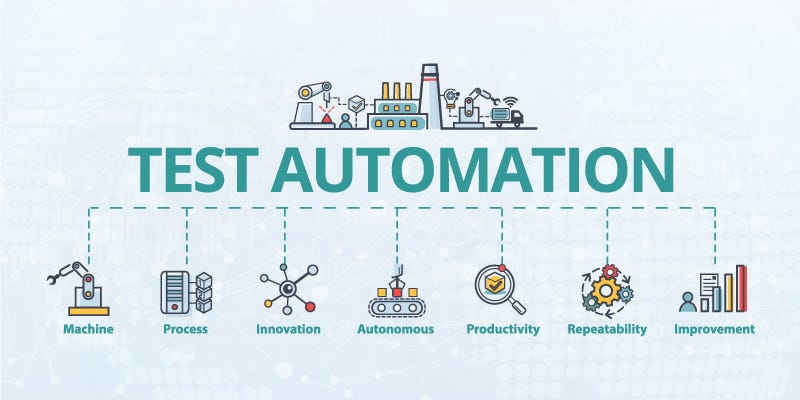Ensuring Success in Automation Checking: Trick Metrics, Difficulties, and Solutions Every QA Group Should Know
In the world of software program quality guarantee, the landscape of automation testing is ever-evolving, requiring a careful technique to ensure seamless operations. The trip to grasping automation testing is paved with subtleties that need an eager eye for surveillance, analysis, and constant improvement. As the market drives onward, the quest for optimum performance in automation screening continues to be a constant pursuit, advising QA groups to equip themselves with the expertise and strategies vital for triumph.
Relevance of Key Metrics
Comprehending the significance of essential metrics is essential for reviewing the performance and efficiency of automation testing processes. Secret metrics serve as quantifiable steps that give valuable insights right into numerous aspects of the screening process, such as examination insurance coverage, examination execution time, issue density, and test case efficiency. By evaluating these metrics, QA teams can determine traffic jams, inefficiencies, and areas for enhancement within their automation screening framework.
One important element of crucial metrics is their capability to track progress and monitor the total wellness of the screening procedure (automation testing). They make it possible for stakeholders to make enlightened decisions based upon data-driven understandings, which can result in a lot more efficient screening strategies and better resource allocation. Furthermore, vital metrics can help groups established reasonable objectives, determine the success of automation initiatives, and demonstrate the ROI of automation testing efforts

Usual Challenges Faced
Challenges typically run into in automation testing processes can dramatically impact the general efficiency and efficiency of QA teams. Automation testing may not cover all aspects of testing, such as use and customer experience screening, which still call for manual treatment. Getting over these difficulties needs proper preparation, calculated examination situation choice, robust upkeep procedures, ample sources, and a clear understanding of the restrictions of automation screening.
Effective Solutions for Obstacles
To address the obstacles come across in automation screening, applying efficient options is essential for improving the efficiency and productivity of QA groups. One crucial solution is to invest in robust training programs for QA teams to guarantee they have the necessary abilities to efficiently utilize automation tools. Training can bridge knowledge gaps, improve understanding of automation frameworks, and boost scripting capabilities, eventually resulting in more reliable test development and implementation.
An additional vital option is to develop clear communication channels within the QA group and with other stakeholders, such as developers and job managers. Effective interaction assists in aligning assumptions, sharing development updates, and promptly addressing concerns or roadblocks that may emerge throughout the automation screening process.

Tracking and Analysis Techniques
Applying reliable surveillance and evaluation techniques is crucial for making sure the success and performance of automation testing procedures. Furthermore, analyzing examination outcomes and metrics gives useful insights into the top quality of the software being tested and the performance of the testing strategy.
One secret method in tracking and analysis is the usage of control panels that settle pertinent metrics and KPIs in a visually accessible layout. These dashboards use an extensive summary of examination implementation condition, examination protection, flaw trends, and various other vital info. Regularly evaluating and analyzing these dashboards can aid QA teams make educated decisions, prioritize tasks, and optimize screening efforts.
Furthermore, applying automated notifies and notifications based upon predefined limits can improve aggressive monitoring and timely intervention. By establishing informs for performance deviations click for source or test failings, groups can resolve issues immediately and stop them from rising. On the whole, tracking and evaluation strategies play a vital function in guaranteeing the performance and success of automation screening efforts.
Continuous Renovation Strategies
Enhancing the efficacy of automation testing procedures necessitates the consistent improvement of techniques and techniques. Continuous enhancement approaches are essential for QA groups to adjust to evolving modern technologies and provide high-grade software. One vital strategy to improving automation screening procedures is to carry out routine reviews and retrospectives. By analyzing past screening cycles, teams can determine traffic jams, inadequacies, and areas for enhancement. Executing responses loopholes and incorporating lessons learned right into future screening frameworks can yield substantial improvements in time.

Verdict
To conclude, it is essential for QA teams to recognize the essential metrics, obstacles, and services in automation screening to make sure success. By thoroughly checking and evaluating information, implementing reliable solutions to usual challenges, and continually improving strategies, QA groups can enhance their testing procedures and provide top notch software program products. Following these methods will ultimately cause extra efficient and effective automation screening methods.
By assessing these metrics, QA groups can recognize bottlenecks, inefficiencies, and locations for improvement within their automation screening framework.
Furthermore, vital metrics can aid groups established realistic objectives, gauge the success of automation efforts, and demonstrate the ROI of automation screening initiatives.
Difficulties generally come across in automation screening procedures can significantly affect the overall effectiveness and efficiency of QA teams. Automation testing may not cover all facets of screening, such as usability and user experience testing, which still require manual anonymous treatment.In final thought, it is important for QA groups to recognize the vital metrics, challenges, and services in automation screening to make sure success.